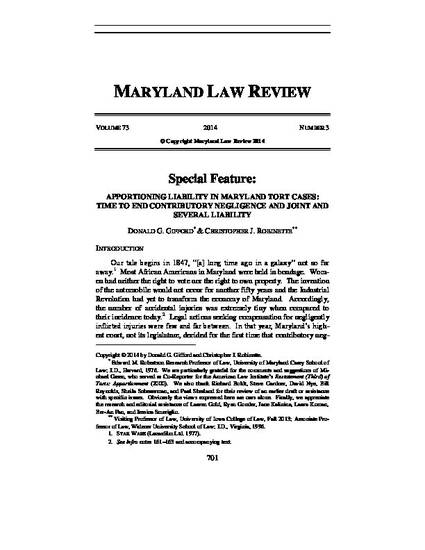
- contributory negligence,
- comparative negligence,
- comparative fault,
- precedent,
- stare decisis,
- common law,
- overruling,
- legislative inaction,
- joint and several liability,
- proportionate liability,
- several liability,
- reallocation,
- contribution,
- seat belt nonuse,
- multiple tortfeasors,
- absent tortfeasors,
- assumption of risk,
- last clear chance
The Article presents a comprehensive proposal for assigning liability in tort cases according to the parties’ respective degrees of fault. The authors criticize the Court of Appeals of Maryland’s recent decision in Coleman v. Soccer Association of Columbia declining to abrogate contributory negligence, particularly the court’s notion that it should not act because of the legislature’s repeated failure to do so. The Article provides a comprehensive analysis of the advantages and disadvantages of comparative fault, including its effect on administrative costs, claims frequency, claims severity, insurance premiums, and economic performance. The authors propose the legislative enactment of comparative fault and debate the respective advantages of its pure and modified forms. The Article then provides a comprehensive roadmap for the implementation of a comparative fault system and addresses the handling of multiple and absent tortfeasors and how the implementation of comparative fault should affect the law governing last clear chance, assumption of risk, and intentional wrongdoing. Because the authors’ approach is one of apportioning liability according to fault, they then recommend abrogating other Maryland doctrines that refuse to apportion liability, including joint and several liability and the state’s statute that declares evidence of seat belt nonuse inadmissible.
- Common Law and
- Torts
